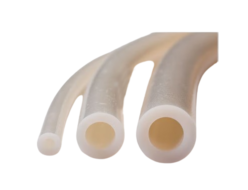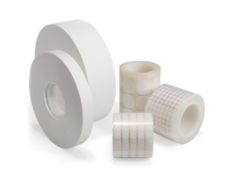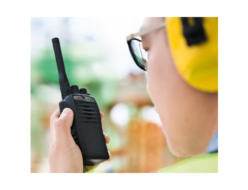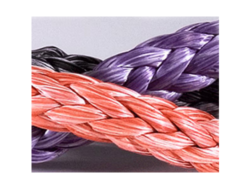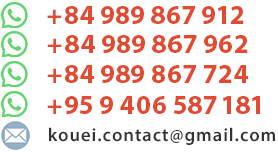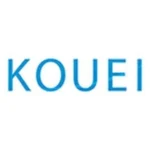Gore (日本ゴア)
GORE Tethered Drone Cables for Commercial And Defense
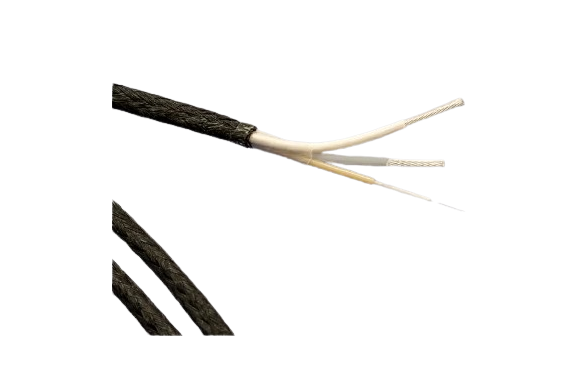
Manufacturer: Gore (日本ゴア)
Made in Japan
Model: Tethered Drone Cables
Overview of Tethered Drone Cables
Cables attached to commercial and defense tethered drones use traditional durable materials that are bulky and heavy, often weighing drones down. On the flip side, lighter-weight cable materials absorb moisture and lack enough protection to resist harsh environments like high temperatures. Both cable materials create issues during operation that can limit your payload options and reduce your drone’s capabilities.
GORE Tethered Drone Cables are a game-changer for the commercial and defense industries. We strike a balance by blending reliable high-power and fiber optic cables with rugged materials in a small-scale hybrid design.
Smaller Design With Better Protection
Our tethered drone cables are 20% smaller in size than standard nylon-built cables, which means they’re naturally lighter weight. So they take up less space inside the tether management system (TMS), giving you more design options and allowing for extra payload during operation.
We also build our cables with high-strength, weather-proof GORE® Abrasion Resistant Cable Jacket. They’re proven to survive damage from abrasion, wide temperatures, humidity and repeated reeling, to name a few. In fact, our single-mode fiber optic cable offers a high level of crush resistance and meets ARINC 802-3 requirements for a secure data link from the drone to ground support equipment (GSE).
More Weight Stability In Harsh Fluids
Because every gram of weight saved on a drone matters, we tested our unique fiber braid cable against a standard nylon cable to see how both performed when immersed in harsh fluids. Results showed that the initial weight of the nylon cable increased significantly by 13% in hydraulic fluid and more than 7.5% in salt water. But, our cable offers 90% less weight pickup, particularly holding less than 1% in saltwater for even more design/payload options and height above ground level (AGL).

High-Strength, Lightweight Construction of GORE Tethered Drone Cables.
Applications
With proven unrivaled durable performance, GORE Tethered Drone Cables deliver unfailing data transmission, secure signals and high-voltage power in applications like:
- electro-optical infrared (EO/IR) sensors
- HD streaming camera & video systems
- intelligence, surveillance & reconnaissance (ISR)
- Search & rescue operations
- Telecommunications
The fiber can also function as a reliable low-loss coaxial cable for applications that transmit and receive data like:
- line-of-sight communication
- mesh drone networks
- rural network connectivity
- temporary cell towers
- video streaming (downlink for emergency response, search & rescue, aerial photography, news & events, border patrol)

Features & Benefits
Outperforming standard cables, GORE Tethered Drone Cables bring unique features that give them more durability against harsh environments and contaminants, including:
- crush- and abrasion-resistant materials
- chemically inert, weather-proof materials
- low-friction fiber braid cable jacket
- smaller, lighter weight cable diameters
For system architects and engineers, our hybrid cables offer numerous benefits that enable drones to fly higher, see farther and do more, like:
- more design options and extra payload with reduced size/weight
- less weight pickup for more stability in harsh fluids than nylon cables
- withstand abrasion, weather, terrain, extreme temperatures, repeated reeling, more
- proven crush-resistant fiber optic cable meets ARINC 802-3 requirements
- deliver continuous high-voltage power, secure signals, high-bandwidth data transfer
- easier handling, less maintenance, extended product life, fewer cable replacements
Technical Specs
These values demonstrate the electrical, mechanical and environmental performance of GORE Tethered Drone Cables for commercial and defense.
| Elec./Mech./Environ. Property | Power Pair | Data Pair | Fiber Optic |
|---|---|---|---|
| Operating Voltagea Vrms | 250 | 600 | — |
| Testing Voltage Vrms | 1500 | 1500 | — |
| Maximum Optical Loss at 1310 nm (dB/km) | — | — | 0.35 |
| Maximum Optical Loss at 1550 nm (dB/km) | — | — | 0.20 |
| Jacket Material | Engineered Fluoropolymer Fiber Braid | ||
| Jacket Color | Black | ||
| Insulation Color | Blue / White | Gray / White | Brown |
| Insulation Wall Thickness mm (in) | 0.14 (0.006) | 0.14 (0.006) | — |
| Conductor | Silver-Plated Copper | Silver-Plated Copper | — |
| Mode Type µm | — | — | Single (900) |
| Core / Cladding / Coating | — | — | 8 / 125 / 245 |
| Coating Type | — | — | High Temperature Acrylate |
| Buffer | — | — | ePTFE |
| Dielectric Material | Expanded PTFE/PTFE | ||
| Crush / Impact Resistanceb kgf/cm (lb/in) (ARINC 802-3) | — | — | Pass |
| Tensile Strengthb N (lb) 16 AWG 20 AWG 24 AWG | 1538 (345) 1092 (245) 910 (204) | ||
| Scrape Abrasionb Cycles, 500 g (1.1 lb) (SAE AS4373™) | > 36,000 | ||
| Fluid Immersion / Weight Stabilityb % Absorption (SAE AS4373™) | Pass > 1 (Salt Water, Diesel) / > 2.5 (Hydraulic) | ||
| Cold Bend Resistanceb (SAE AS4373™) | Pass | ||
| Temperature Range °C | -60 to +200 | -60 to +200 | -60 to +85c |
a Based on a NEMA HP3 wire.
b Testing based on size 22 AWG.
c Attenuation may increase above 85°C.


